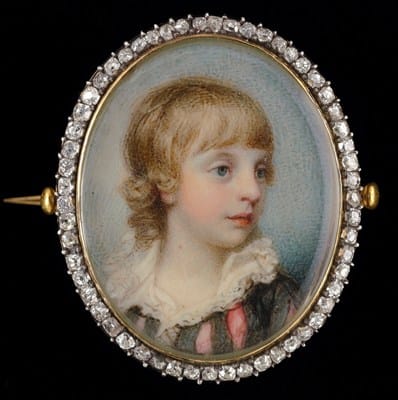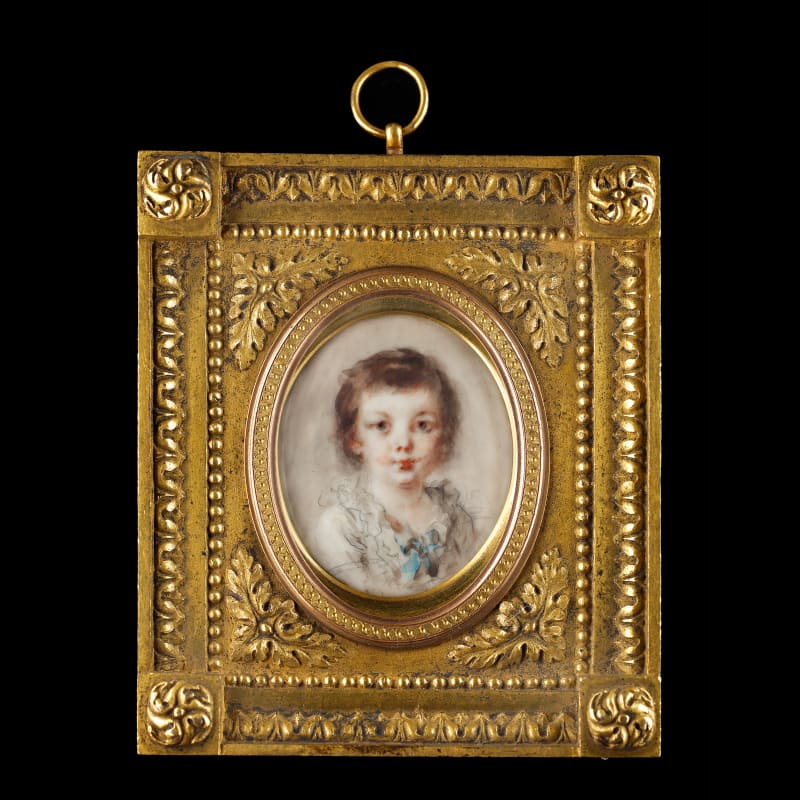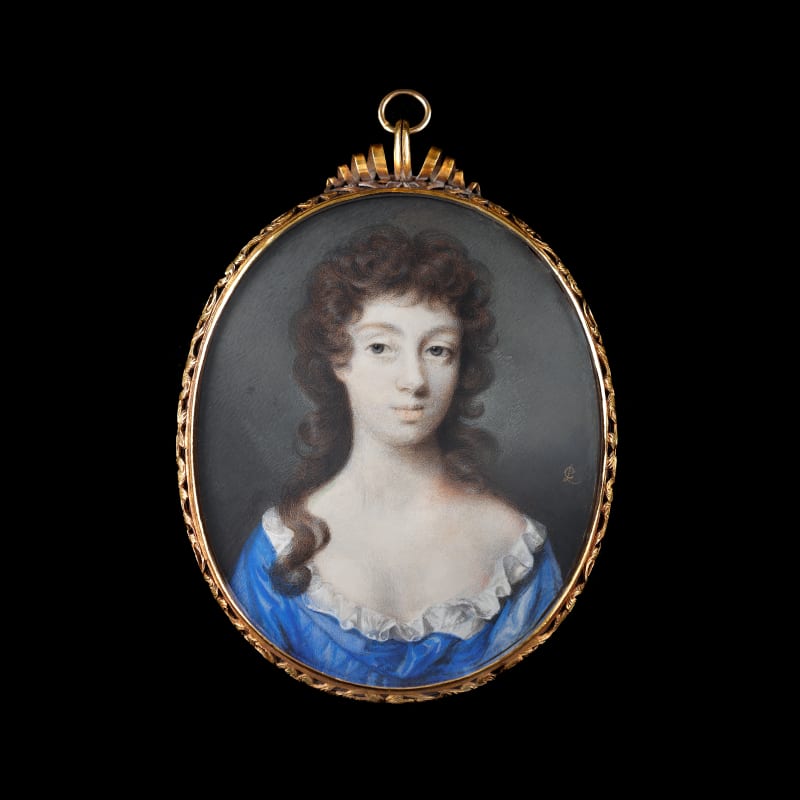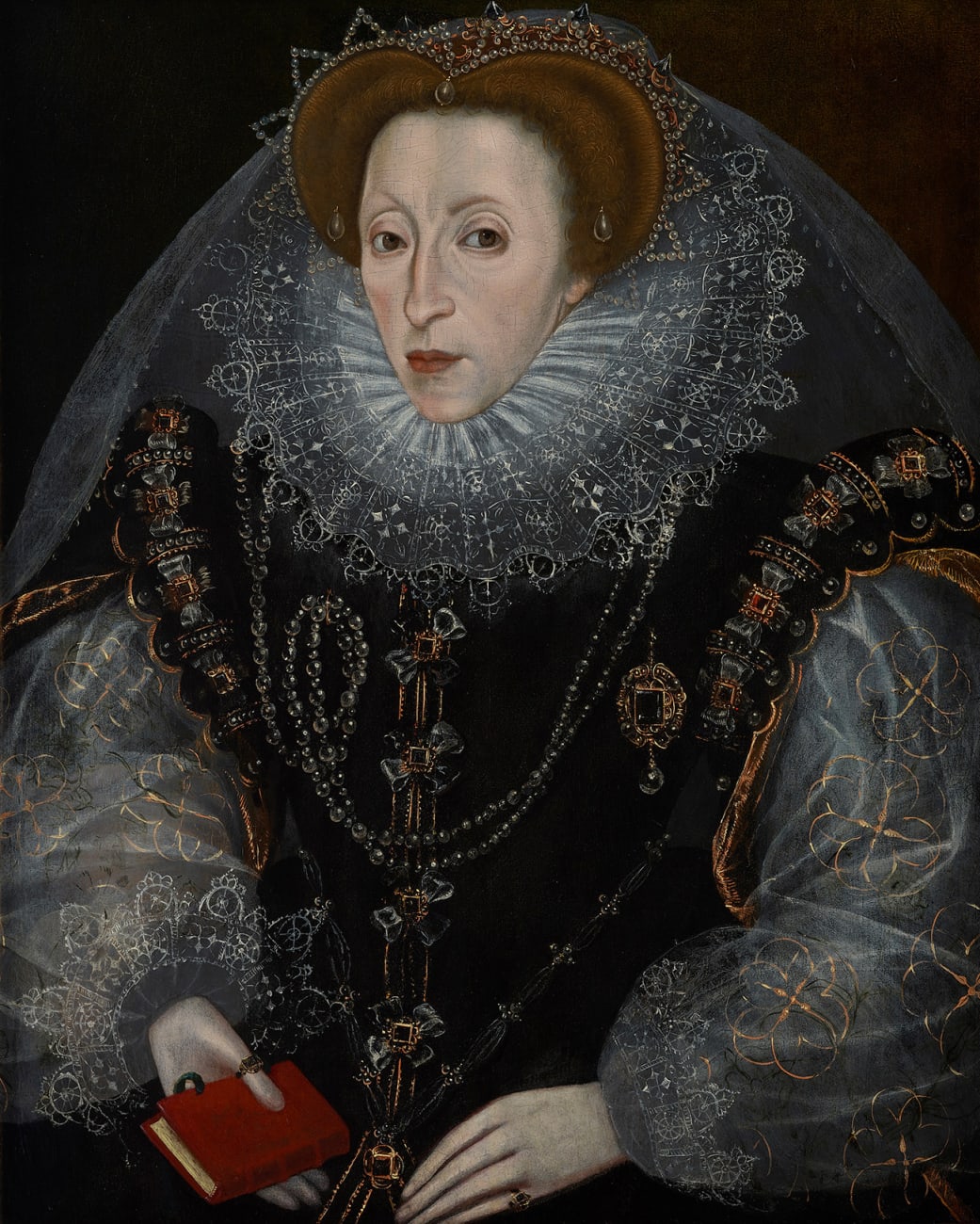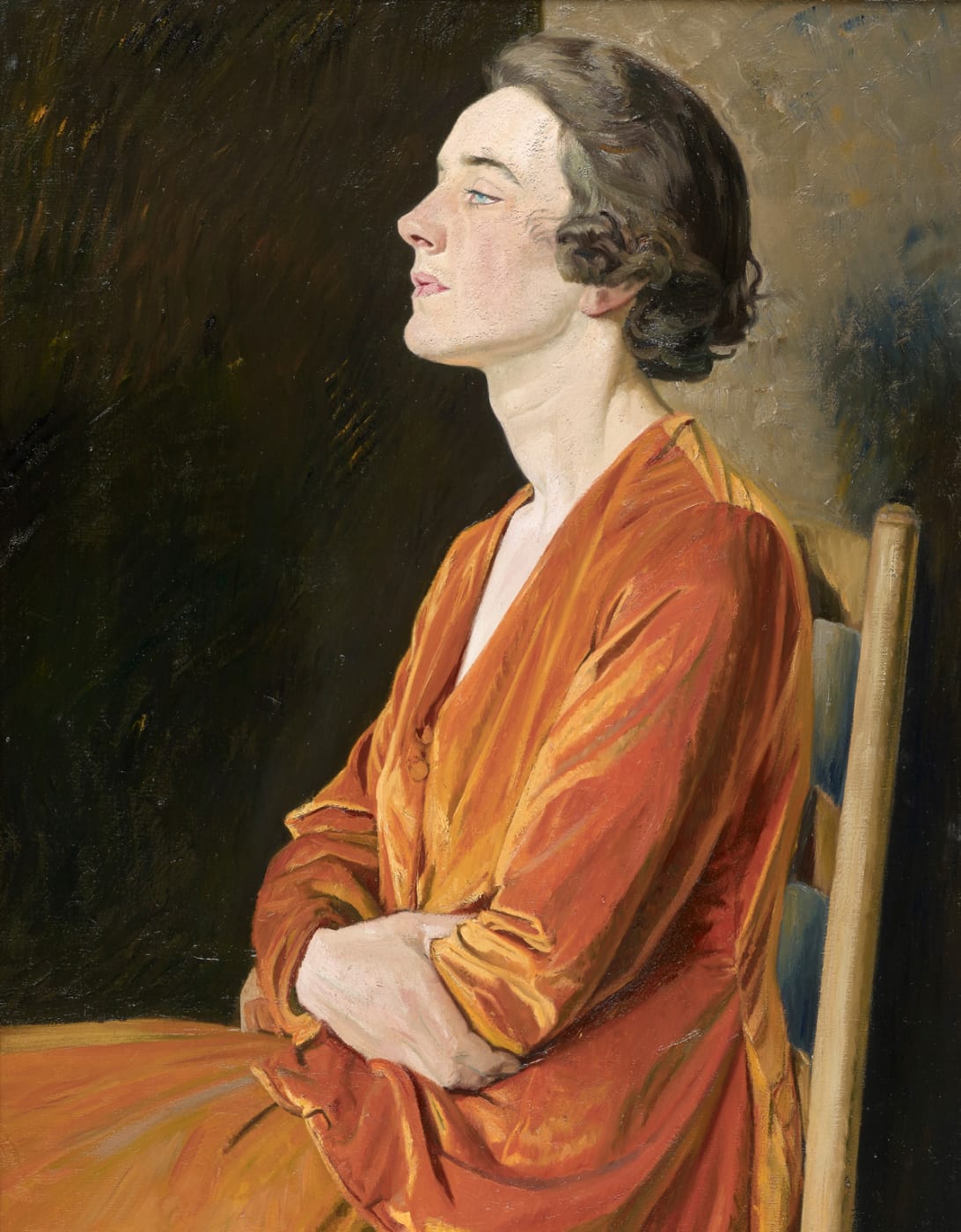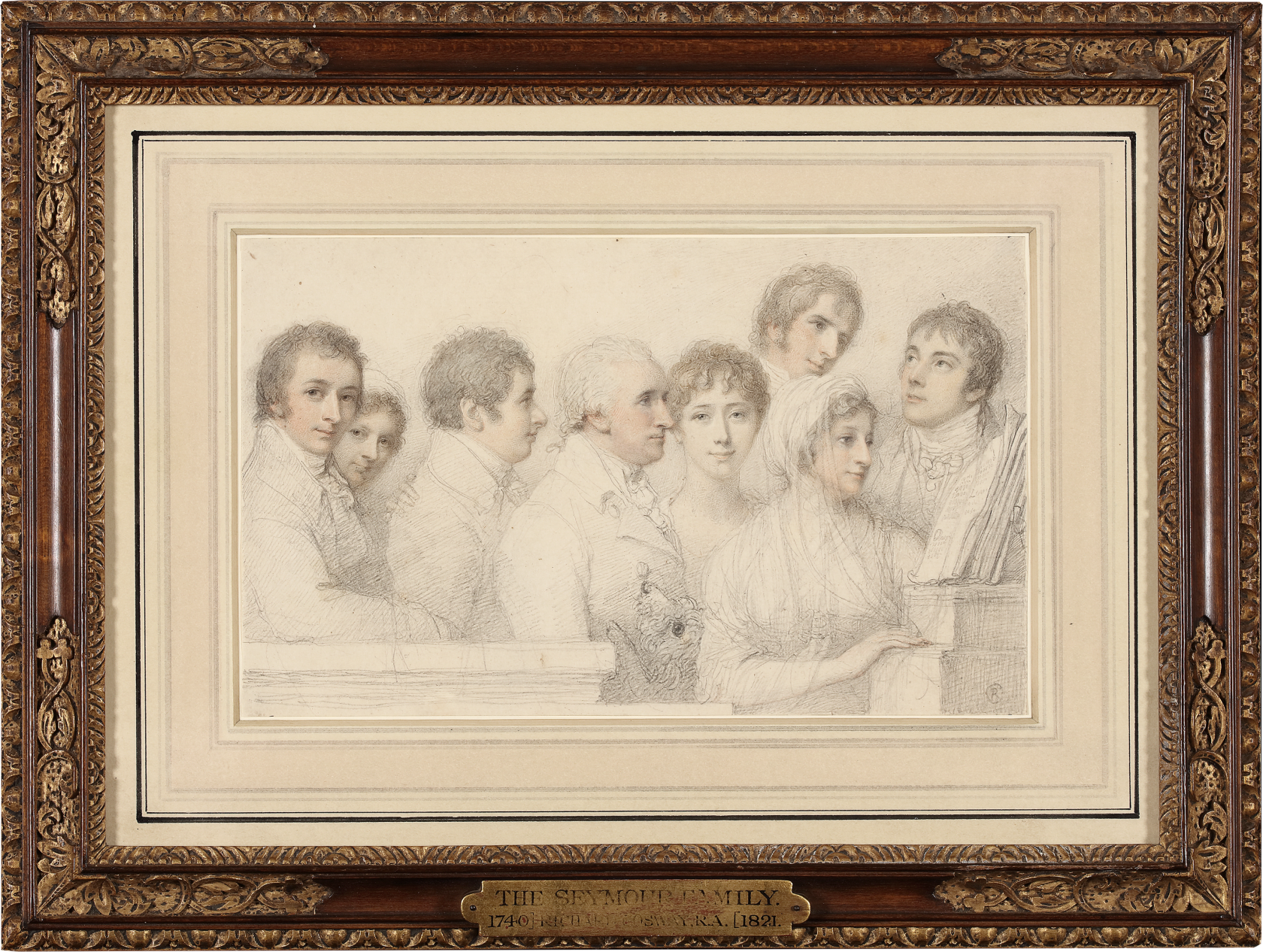

Richard Cosway
(1742-1821) A Group Portrait of the Seymour FamilyProvenance
By family descent.
With an unbroken provenance, this unpublished drawing bearing the rare Cosway monogram is an exciting new addition to his oeuvre.[1] Cosway would have been fully aware of the Seymour family and their important societal and political connections.
Francis Ingram Seymour Conway (1743-1822), likely the figure at the centre of the drawing, succeeded his father to become the 2nd Marquess of Hertford in 1794, hence the suggested date of this drawing.[2] Francis had already held the position of Lord of the Treasury and was just following a stint as Ambassador to Berlin and Vienna when his father died after a fall from his horse.
Francis’s second marriage was to Isabella Ann Ingram (1759-1834), who would have been 35 years of age by the time this drawing was executed. She is possibly the figure examining the family Bible at the front plane of the image. Great friends and a strong influence over George, Prince of Wales (later George IV), she...
With an unbroken provenance, this unpublished drawing bearing the rare Cosway monogram is an exciting new addition to his oeuvre.[1] Cosway would have been fully aware of the Seymour family and their important societal and political connections.
Francis Ingram Seymour Conway (1743-1822), likely the figure at the centre of the drawing, succeeded his father to become the 2nd Marquess of Hertford in 1794, hence the suggested date of this drawing.[2] Francis had already held the position of Lord of the Treasury and was just following a stint as Ambassador to Berlin and Vienna when his father died after a fall from his horse.
Francis’s second marriage was to Isabella Ann Ingram (1759-1834), who would have been 35 years of age by the time this drawing was executed. She is possibly the figure examining the family Bible at the front plane of the image. Great friends and a strong influence over George, Prince of Wales (later George IV), she was the subject of much rumour concerning the nature of their relationship.
It is possible that the figure behind Francis is his brother Vice-Admiral Lord Hugh Seymour (1759-1801). Born sixteen years later than his elder sibling, Hugh appears in civilian clothing despite a distinguished naval career. It is possible that his wife, Lady Anne Horatia Seymour (nee Waldegrave) (1762-1801) sits at the back next to another possible brother of the new Marquess. The other male figures might also be younger brothers, their sizeable family consisting of seven brothers and six sisters.
The figure who is most mysterious is the only person in the group looking squarely out at the viewer. A young woman, her hair cropped fashionably short ‘a la Titus’, she may have been the teenage daughter of one of the brothers in the scene – a niece to Francis. This bold and fashionable hairstyle had recently migrated from France, the location of the sinister origin of this new look. It is said to have been adopted from the short haircuts forced onto the noble women facing the guillotine – with the hair cropped short at the neck and left with longer strands at the front. The fashion had been initiated by men, cutting their hair to imitate the Roman emperor Titus. Given that, as the Dictionary of National Biography states, in 1793 Seymour had played a role in Britain’s involvement with a war with Revolutionary France, this seems to be a political statement as well as a trend adopted by a younger member of the family.[3]
It would be difficult to overstate how central the Seymour family were in the political, naval, military and social circles of the later 18th century. Intimately connected with George III and later his son, George, Prince of Wales, their wealth and influence was such that they were able to manipulate public life at the highest level. Culturally, the family also wielded great influence, not least through the habitual employment of Richard Cosway as portraitist and the eventual establishment of one of the finest collections of French art, now ‘The Wallace Collection’ in Manchester Square, London.[4]
This drawing, destined to remain in the family since its conception, marks a relatively private moment in the family’s history, with the group gathered in worship in the family pew. It is possible that Cosway was a visitor to the impressive Ragley Hall at this time. A Wren house, it had been completed only in the middle of the eighteenth century, bringing together the talent of the great architects and designers of the period - James Gibbs designed the baroque plasterwork in the Great Hall in 1750 and Wyatt added the portico, as well as decorating the Red Saloon and Mauve Room, in 1780. If Cosway visited Ragley at this time it may have been just before the return of his wife Maria from Italy (November 1794), where she had fled after the birth of their daughter Louisa Paolina Angelica in 1791.
[1] Only a handful of Cosway’s drawings and portrait miniatures display his monogram; these include a portrait drawing of Margaret Long and her son (sold Woolley and Wallis December 2014) and his miniature portrait of George IV as prince of Wales, likely commissioned in 1782 for his mistress Mary ‘Perdita’ Robinson (NPG 5890).
[2] Comparison with other portraits of the 2nd Marquess, particularly with sculpture (for example, by Sir Francis Leggatt Chantry (https://www.artfund.org/supporting-museums/art-weve-helped-buy/artwork/7627/bust-of-francis-seymour-conway-2nd-marquess-of-hertford), show a strong resemblance to the portrait here.
[3] The Oxford Dictionary of National Biography states: ‘In the later part of his [Francis Seymour’s] career in the Commons he was generally associated with the Foxite opposition against Pitt, but in 1793 he spoke in favour of the Aliens Bill and seconded Pitt's address to the king, which paved the way for the abandonment of neutrality in favour of war with revolutionary France.’
[4] In 1797 the 2nd Marquess bought Hertford House house as a hunting lodge but subsequent owners have added to it. They also added to the Collection, but the greatest of the collectors were the 4th Marquess and Sir Richard. It is now open to the public as The Wallace Collection.



